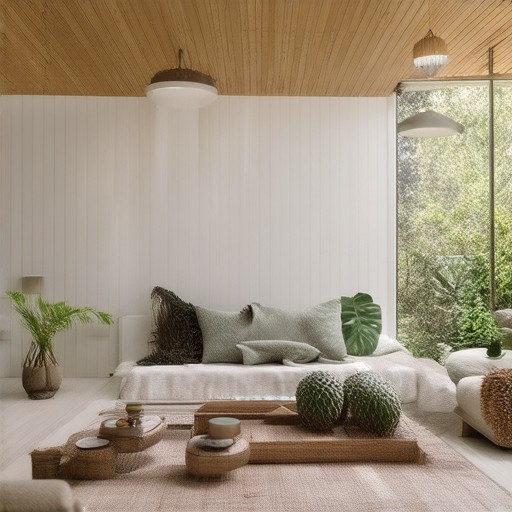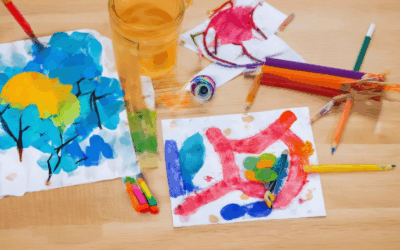Eco-conscious decorating has emerged as a popular movement among those seeking to integrate sustainability into their living spaces. By focusing on materials and practices that minimize environmental impact, eco-friendly interior design offers a way to create stylish, healthy, and sustainable homes. Whether you’re aiming to reduce waste, lower your carbon footprint, or simply embrace a lifestyle that reflects your values, eco-conscious decorating provides endless opportunities to transform your space into something truly unique and meaningful. From selecting responsibly sourced furniture to incorporating organic wall decor, every decision counts. Join us as we explore the ins and outs of eco-conscious decorating, uncovering tips, tricks, and insights to help you create a home that’s as Earth-friendly as it is beautiful.

Eco-Conscious Design Explained
Eco-conscious design refers to a holistic approach in design that prioritizes environmental sustainability and ethical practices throughout the entire lifecycle of a product, service, or structure. This approach integrates ecological principles into every stage of the design process, from concept development to production, distribution, and end-of-life management.
Key Components of Eco-Conscious Design
- Sustainable Materials: Designers use materials that have a low environmental impact, such as recycled steel, aluminum, or bamboo, instead of traditional materials like plastic or wood.
- Energy Efficiency: Products and structures are designed to consume less energy during production and use, often incorporating renewable energy sources or durable designs to reduce replacement needs.
- Waste Reduction: Techniques like modular design are employed to minimize material waste and enable easier reuse or repurposing of components.
- Carbon Footprint Reduction: Designers focus on manufacturing processes with low carbon emissions, such as using local suppliers and optimizing logistics to reduce energy use in delivery.
- Ethical Sourcing: Raw materials are sourced sustainably, often through fair-trade practices or partnerships with communities practicing responsible forestry and agriculture.
- Durability and Longevity: Designs are created to last longer, reducing the likelihood of discarded items ending up in landfills. Repairable designs also extend product lifecycles.
- Aesthetic Appeal: Eco-conscious designs are not only functional but also aesthetically pleasing, often incorporating organic shapes and natural patterns that resonate with environmental values.
- Education and Awareness: Design documentation and transparent processes are used to educate stakeholders and promote sustainable practices, encouraging widespread adoption of eco-friendly design principles.
Eco-conscious design is not just about the final product; it’s about every decision made along the way to minimize environmental impact. By integrating these principles, designers contribute to a more sustainable future while delivering innovative and meaningful solutions.
What is Eco-Friendly Interior Design?
Eco-friendly interior design focuses on creating sustainable, healthy, and visually appealing living spaces. This approach prioritizes minimizing environmental impact while maximizing functionality and aesthetics. By integrating sustainable materials, reducing waste, and optimizing energy use, eco-friendly interior design helps protect the planet while enhancing daily life.
Key Principles of Eco-Friendly Interior Design
- Recycled and Repurposed Materials: Using materials that have been previously discarded or upcycled, such as reclaimed wood, metal, or fabric, reduces resource depletion and landfill waste.
- Low-VOC Paints and Adhesives: Volatile organic compounds (VOCs) in conventional paints and adhesives can harm indoor air quality. Eco-friendly options are water-based and free of harmful chemicals.
- Energy-Efficient Appliances and Lighting: Incorporating ENERGY STAR-rated appliances and LED lighting reduces energy consumption, lowering utility bills and carbon footprints.
- Biodegradable and Non-Toxic Materials: Selecting materials like natural fibers, organic cotton, and hemp ensures durability while avoiding toxic substances that can harm health and the environment.
- Water Conservation Features: Installing low-flow faucets, showers, and toilets helps conserve water, contributing to overall water sustainability.
- Durable and Long-Lasting Designs: Eco-friendly designs often emphasize durability, reducing the frequency of replacements and minimizing waste.
Benefits of Eco-Friendly Interior Design
- Reduces Environmental Impact: By using sustainable materials and practices, eco-friendly interiors minimize harm to ecosystems and reduce waste.
- Improves Indoor Air Quality: Low-VOC products and natural materials contribute to healthier living environments, reducing symptoms of allergies and asthma.
- Lower Utility Costs: Energy-efficient appliances and lighting save money while reducing reliance on non-renewable resources.
- Supports Sustainability: Promoting eco-friendly design encourages the use of sustainable products and practices, helping to create a more sustainable lifestyle.

What is Being Eco-Conscious?
Being eco-conscious refers to being aware of the environmental impact of your actions and making choices that minimize harm to the planet. It involves considering the consequences of your decisions and striving to live in harmony with nature.
Key Aspects of Eco-Consciousness
- Sustainable Living:** Making day-to-day choices that have a low environmental footprint, such as reducing waste, conserving water, and using renewable energy sources.
- Eco-Friendly Consumption:** Purchasing products made from sustainable materials and supporting ethical production practices.
- Environmental Awareness:** Staying informed about environmental issues and advocating for positive change.
- Carbon Footprint Reduction:** Taking steps to lower greenhouse gas emissions through transportation, energy use, and lifestyle adjustments.
Why is Eco-Consciousness Important?
Eco-consciousness is crucial for preserving the planet for future generations. It drives innovation, supports sustainable industries, and fosters a healthier relationship between humans and the natural world.
How to Become More Eco-Conscious
- Reduce Waste:** Participate in recycling programs and compost organic materials.
- Consserve Water:** Install water-saving devices and limit unnecessary water usage.
- Support Sustainable Brands:** Choose products from companies committed to environmental responsibility.
- Adopt Renewable Energy:** Switch to solar, wind, or geothermal energy sources.
- Minimize Plastic Use:** Opt for reusable containers and avoid single-use plastics.
Examples of Eco-Conscious Initiatives
Eco-conscious efforts include participating in tree-planting campaigns, joining zero-waste communities, and supporting local sustainability projects. Many organizations and businesses now offer eco-friendly products and services to help individuals and businesses reduce their environmental impact.
Common Misconceptions
- Myth:** “Eco-consciousness is too extreme or expensive.”
- Myth:** “Individual efforts won’t make a difference.”
In reality, small changes can lead to significant environmental benefits without breaking the bank. Many eco-friendly options are affordable and accessible.
Collective action, starting with personal choices, can create a ripple effect that leads to broader environmental improvements.
Eco-consciousness is a mindset that empowers individuals to take control of their impact on the planet. By making informed, responsible choices, we can contribute to a healthier, more sustainable future for all.

What Are Eco-Friendly Materials for Decorations?
Eco-friendly materials are essential for creating sustainable and environmentally conscious decorations. Here are some of the best options:
- Paper Products : Opt for recycled paper or FSC-certified paper for cards, posters, and decorative signs. These materials are biodegradable and highly recyclable.
- Bamboo : Bamboo is a renewable resource that can be used for decorative items like baskets, wall art, and flooring. It grows quickly and requires less water, making it a great choice for eco-conscious decorators.
- Recycled Metals : Repurposed metal, such as old soda cans, can be transformed into decorative pieces like sculptures, wall art, or garden ornaments. This reduces waste and supports the circular economy.
- FSC-Certified Wood : Choose wood that has been certified by the Forest Stewardship Council (FSC) to ensure sustainable forestry practices. This wood can be used for decorative accents like picture frames, shelves, and furniture.
- Hemp and Jute : Hemp fiber and jute are natural materials that are strong and durable. They can be used for ropes, fabric decorations, and plant pots, contributing to a more sustainable lifestyle.
- Low-VOC Paints and Adhesives : When painting or assembling decorations, use low-volatile organic compound (Low-VOC) paints and adhesives to minimize harmful chemical exposure indoors.
- Upcycled Materials : Transform discarded items like cardboard boxes, plastic bottles, and fabric scraps into decorative pieces. This not only reduces waste but also adds a unique touch to your decor.
- Solar Lighting : Incorporate solar-powered fairy lights or lanterns into your decorations. These lights are energy-efficient and require no electricity, making them ideal for outdoor use.
- Biodegradable Materials : Look for decorations made from biodegradable materials like cornstarch-based plastics or mushroom-based packaging. These materials break down naturally and have a lower environmental impact.
- Compressed Natural Gas (CNG) : While less common, CNG can be used for decorative purposes, such as artificial flowers or decorative gas lamps. It burns cleaner than traditional fuels, reducing emissions.
- Water-Based Inks : When printing or labeling decorations, use water-based inks instead of solvent-based ones. These inks dry faster and produce less odor, making them safer for the environment.
- Natural Fibers : Use natural fibers like cotton, wool, and sisal for decorative accents like curtains, rugs, and basketry. These materials are renewable and biodegradable, aligning with eco-friendly principles.
To further enhance sustainability, consider:
- Reducing the amount of waste generated during decoration projects.
- Choosing non-toxic materials to protect human health and the environment.
- Supporting local artisans and businesses that specialize in eco-friendly products.
- Checking local regulations for disposal of certain materials to ensure proper recycling or composting.
What is the most eco-friendly thing?
Eco-friendliness encompasses a variety of sustainable practices that minimize environmental impact. Here are some effective approaches to living an eco-friendly lifestyle:
- Reduce Waste: Minimize plastic use, recycle, and compost organic waste to decrease landfill contributions.
- Conserve Energy: Opt for energy-efficient appliances, use LED lights, and turn off unused electronics to lower power consumption.
- Sustainable Living: Choose renewable products like bamboo flooring, recycled metal, or hemp-based fabrics to reduce resource depletion.
- Support Eco-B Brands: Purchase from companies committed to sustainability, such as Pravylo Project , which offers eco-conscious DIY projects and tutorials.
- Conserve Water: Install water-saving fixtures and reduce unnecessary watering to preserve this vital resource.
- Minimize Plastic Use: Use reusable containers, cloth bags, and eco-friendly packaging to reduce plastic waste.
- Lower Carbon Footprint: Opt for public transportation, bike, or walk to reduce greenhouse gas emissions.
By integrating these habits into daily life, individuals can significantly contribute to environmental preservation while promoting a healthier planet for future generations.

What Material Is Not Environmentally Friendly?
Synthetic fibers like polyester, nylon, rayon, and acrylic are among the worst materials for the environment. While they may require less land and water compared to some natural fibers, their production processes and disposal contribute significantly to environmental degradation.
- Polyester: Made from petroleum, it releases microplastics during washing, harming marine life and ecosystems.
- Nylon: Requires high-energy production processes and releases hazardous chemicals during manufacturing.
- Rayon: Often made from trees, it uses toxic chemicals and contributes to deforestation and water pollution.
- Acrylic: Another petroleum-based material that doesn’t biodegrade and can harm aquatic life.
- Vinyl: Highly toxic during production and leaches harmful chemicals, leading to soil and water contamination.
- Plastic: Takes centuries to decompose, uses fossil fuels, and pollutes landfills and oceans.
Choosing eco-friendly materials like organic cotton, bamboo, or recycled fabrics can help reduce environmental impact. Always check the production process and dispose of textiles responsibly to minimize harm to the planet.





0 Comments